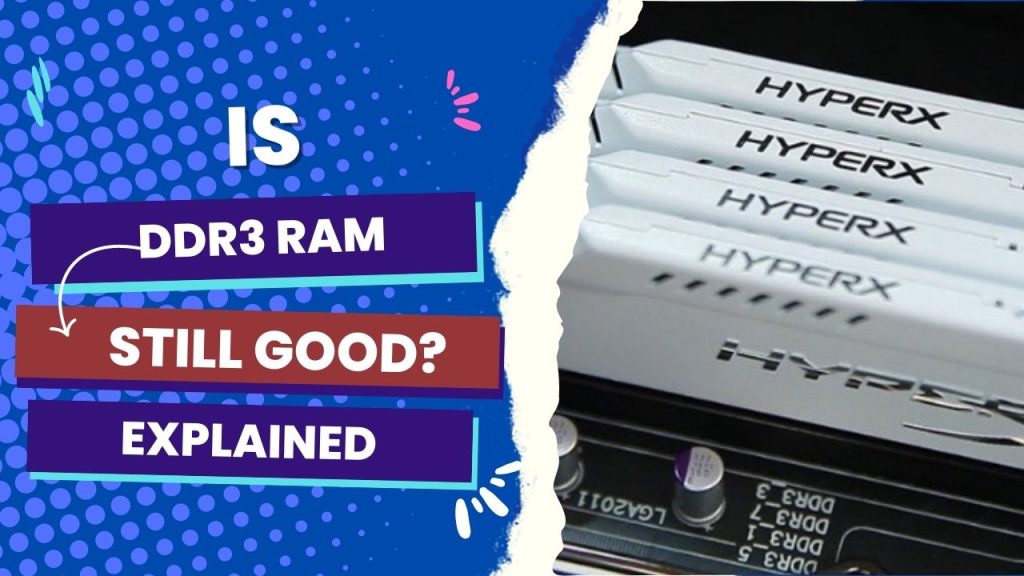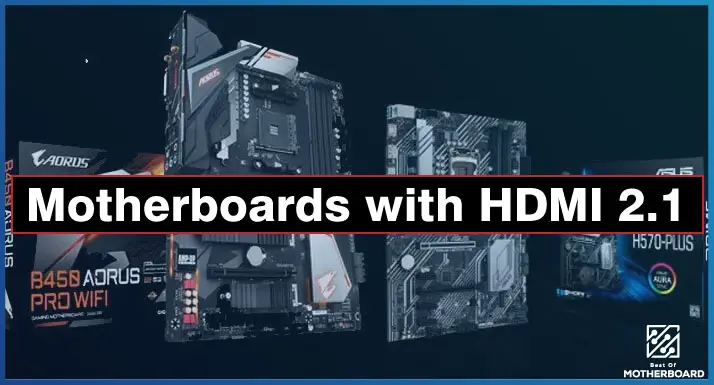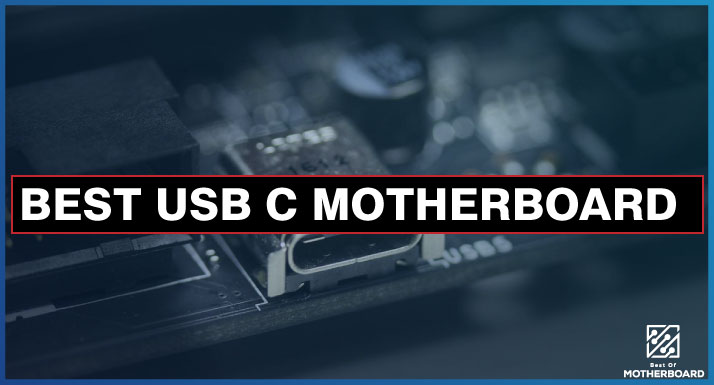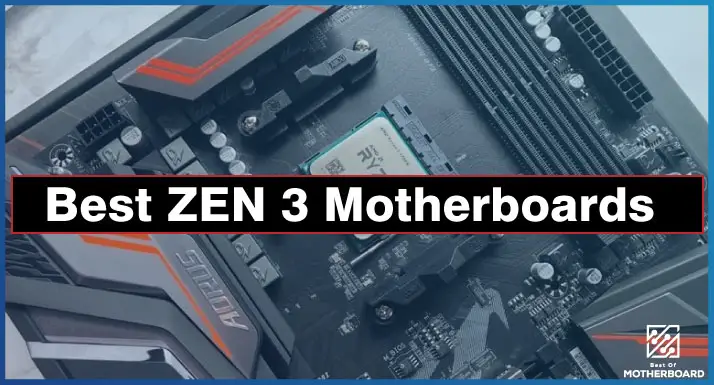Despite the overwhelming popularity of DDR4 or DDR5, using DDR3 RAM is not a bad idea. DDR3 RAM is not as fast and has a lower bandwidth than newer models like DDR5, but it has low latency and costs less than newer models like DDR5.
As you already know, this kind of computer memory is commonly used in desktop and laptop computers and is responsible for storing data and instructions that are being used by the CPU.
It was once the standard for gaming computers, but it has since been surpassed by newer, faster types of memory. So, is DDR3 RAM still usable today?
It all comes down to the intent of use. To come up with a practical response, I had to test on two very similar-performing CPUs and motherboards, one having DDR3 and the other having DDR4.
There were only a few frames per second difference between the most demanding games—hardly noticeable. While the results were similar, DDR3 RAM may be a poor choice depending on the application.
For this reason, we will individually look at how this type of memory measures up for gaming, crypto mining, content creation, and other popular tasks for which many techies use faster RAM.
DDR3 vs. DDR4 vs. DDR5
| Features | DDR3 | DDR4 | DDR5 |
|---|---|---|---|
| Release Date | 2007 | 2014 | 2022 (estimated) |
| Clock Rate | 800–1600 MHz | 800–1600 MHz | 4800–6400 MHz |
| Voltage | 1.35 V | 1.2 V | 1.1 V |
| Transfer Rate | 800–2133 MT/s | 1600–3200 MT/s | 4800–6400 MT/s |
| Bandwidth | 12800–25600 MB/s | 12800–25600 MB/s | 38400–48000 MB/s |
| Max Die Density | 4 Gbit | 16 Gbit | 64 Gbit |
| Max. UDIMM Size | 8 GB | 16 GB | 128 GB |
| Max Data Rate | 1.6 Gbps | 3.2 Gbps | 6.4 Gbps |
| Channels | 1 or 2 | 1 or 2 | 2 |
| Banks per group | 8 | 4 | 4 |
| Bank Groups | 1 | 4 | 4 |
| Burst Length | 8 | 8 | 16 |
| DIMM Pins | 240 (R, LR, U); 204 (SODIMM) | 288 (R, LR, U); 260 (SODIMM) | 288 (R, LR, U); 260 (SODIMM) |
| DIMM Types | RDIMM, LRDIMM, UDIMM, and SODIMM | RDIMM, LRDIMM, UDIMM, and SODIMM | RDIMM, LRDIMM, UDIMM, and SODIMM |
Our Top 3 DDR3 Rams
| Image | Product | Detail | Price |
|---|---|---|---|
 | Patriot 16GB(2x8GB) Viper III DDR3 1600MHz |
| Check Price On Amazon |
 | Gigastone Desktop RAM 32GB (4x8GB) DDR3 1600MHz |
| Check Price On Amazon |
 | Yongxinsheng 16GB (8GBx2) DDR3 1866MHz |
| Check Price On Amazon |
Is DDR3 Still Good for Gaming?
DDR3 RAM is still suitable for gaming, but it may not offer the best performance compared to more recent memory types. DDR3 RAM operates at a slower speed and has a smaller bandwidth than DDR4 and DDR5, resulting in slower data access and transfer.
This can affect the performance of demanding games that require a lot of processing power and fast access to data.
Additionally, DDR3 RAM is not as energy-efficient as newer types of memory, which means it can consume more power and generate more heat. This can be a problem for gaming laptops that have limited space for cooling and need to maintain a low temperature to prevent overheating.
Despite these drawbacks, DDR3 RAM is still a viable option for gaming, especially for those on a budget. It is generally cheaper than DDR4 and DDR5, so it can be a good option for those looking to upgrade their computer’s memory without breaking the bank.
Furthermore, many older games may not require the high speeds and bandwidth of DDR4 and DDR5, so DDR3 RAM can still provide a good gaming experience for these titles.
The bottom line is that DDR3 RAM is still good for gaming, but it may not provide the best performance compared to newer types of memory. It is slower and less energy-efficient, but it is also cheaper and can still be suitable for gaming, especially for older titles.
If you’re looking to upgrade your gaming computer’s memory, it may be worth considering newer types of memory, such as DDR4 or DDR5, to get the best performance.
Is DDR3 Still Good for Crypto Mining?
Crypto mining is a process that involves using computer hardware to solve complex mathematical equations to verify transactions on a blockchain network and earn rewards in the form of cryptocurrency.
To be successful at crypto mining, a computer needs to have a fast processor and a lot of memory. DDR3 memory is an older type of memory that is not as fast or efficient as newer types of memory like DDR4, especially in the area of setup and boot processes.
Meanwhile, higher RAM does not necessarily mean that you get better mining performance. I had no problems using the ASROCK n68s-UCC with DDR2 RAM for mining and two cards.
Still, using DDR3 memory for crypto mining today would not be a good idea for several reasons. First, the rise of ASIC miners has made it difficult for general-purpose computers to compete in the crypto-mining space.
These specialized miners are designed specifically for mining, and they can perform the necessary calculations much more quickly and efficiently than a general-purpose computer.
Second, DDR3 memory is slower and less efficient than DDR4 memory, which means that a computer using DDR3 memory would not be able to keep up with the demands of crypto mining. This would result in slower mining speeds and lower rewards, which would not be cost-effective.
All things considered, it is unlikely that DDR3 memory would be good for crypto mining in 2022. The rise of ASIC miners and the superior speed and efficiency of newer types of memory make it difficult for general-purpose computers to compete in the crypto-mining space.
It would probably be more cost-effective to invest in a dedicated crypto-mining rig that uses newer, more efficient hardware.
Is DDR3 Still Good for Content Creation and Editing?
DDR3 RAM is not the fastest type of memory currently available on the market. Recent years have seen the introduction of RAM types, such as DDR4, that offer faster speeds and enhanced performance. If you are building a new computer for content creation, you may wish to use DDR4 RAM rather than DDR3.
Even so, DDR3 RAM remains a viable option for editing, and if you already have DDR3 RAM on your computer, there is no need to upgrade unless you are experiencing performance issues. Save your dollars.
Meanwhile, it is important to note that the type of RAM you use is not the only factor that determines the performance of your computer. The processor, graphics card, and other hardware components also play a role in determining overall performance.
In short, DDR3 RAM is still a good choice for content creation, but it may not be the fastest option available. If you are looking to build a new computer for content creation, you may want to consider using DDR4 RAM instead. However, if you already have DDR3 RAM and it is working well for your needs, there is no need to upgrade.
pros and cons of using DDR3 RAM
DDR3 RAM is commonly used in desktop and laptop computers. While it is a good balance of performance and price, it may not be the best choice if you need the fastest possible memory speeds or the lowest power consumption. Here’s why:
| Pros | Cons |
| widely available and relatively inexpensive. | not as fast as newer standards found in new computers. |
| faster and more efficient for system performance than the previous DDR2 standard. | Memory consumes more power than other types of memory, which takes a toll on the battery life of your laptops. |
| It can run at higher clock speeds. | not compatible with older systems that use DDR2 or DDR memory. |
What is the fastest DDR3 RAM?
You have probably heard about James Trevaskis, an expert overclocker who succeeded in pushing a 4GB DDR3-3000MHz G.Skill stick to 4404MHz. Well, that was the fastest ever recorded DDR3 memory clock speed—3000 MHz—but the highest tier can run speeds as high as 3000 MHz.
In Summary
Though DDR3 appears to be leaving the market, the 15-year-old technology is still in use and retains its performance value in all respects.
Indeed, Samsung, SK Hynix, and other giant DRAM suppliers have openly announced that the industry is looking to discontinue the production of DDR3 due to dwindling market demands, but the performance difference is very small, save for newer motherboards and chip architectures.
Newer RAM will eventually become the standard, but for now, there’s no grave reason to spend more money on DDR4 if you don’t need to.




